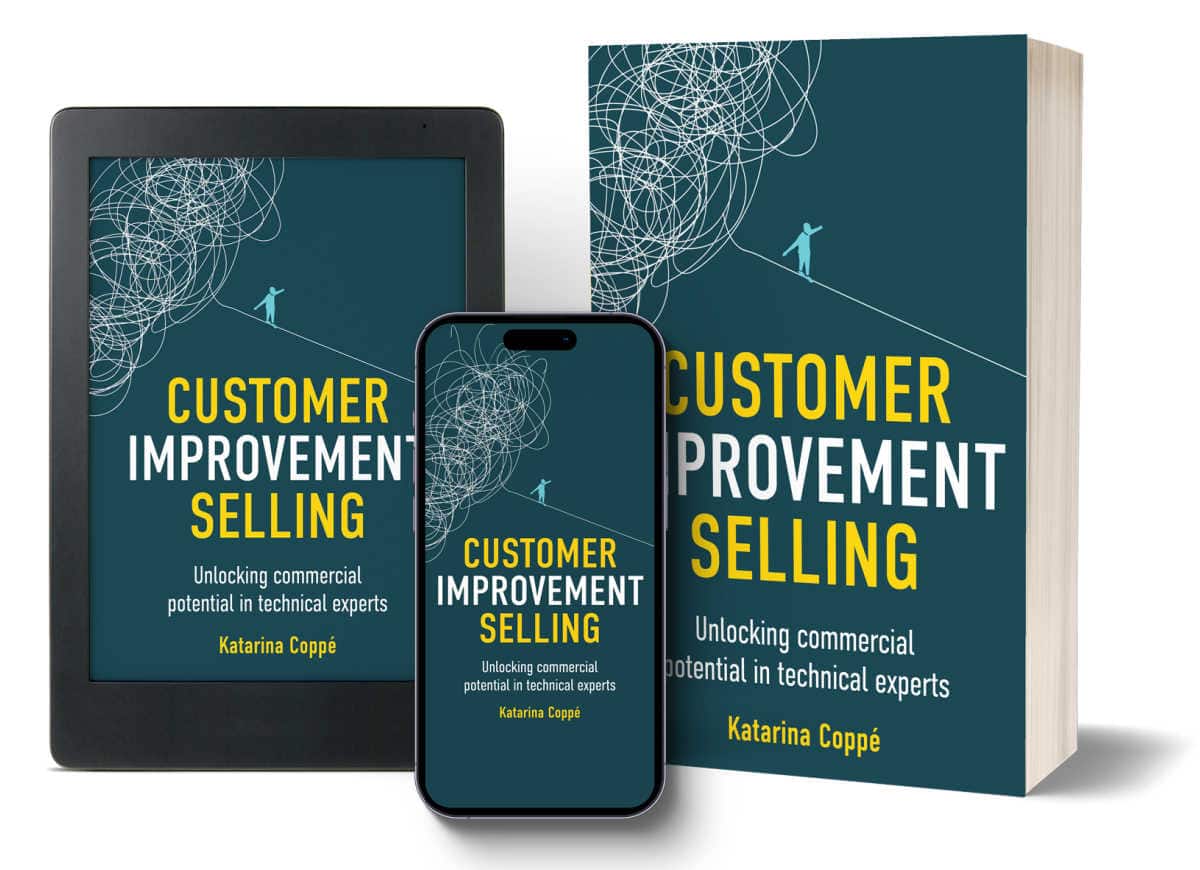Delivering value – real, strategic, measurable value – requires something more than delivering on time and within budget: commercial awareness. Project managers need to drive the commercial impacts of their projects.
It’s not just about spreadsheets and budgets. It’s about understanding how your project contributes to the bigger picture, spotting opportunities, asking better questions, and sometimes challenging assumptions.
Commercial thinking isn’t just for senior leaders or finance teams. It’s something every project manager can, and should, develop.
I’ll share what thinking commercially means in practice, why it matters, and some ideas to help you build your confidence in this area, drawing on concepts from my book, Customer Improvement Selling: Unlocking Commercial Potential in Technical Experts.
The book provides practical frameworks based on insights from behavioural science, commercial best practices, and my own international research. Its goal is to enable employees in technical roles (any non-sales role) to make more meaningful contributions to projects and thereby help drive their commercial impact.
Why project managers need a commercial AIM
To break silos and enable all types of experts in an organisation to contribute to the commercial success of projects, project managers can adopt the commercial AIM mindset: Anticipate needs, Inspire with insight, Mobilise change.
Anticipate needs
Project managers must be proactive in identifying customer needs and market trends. By anticipating these needs, they can develop solutions that address potential challenges before they arise.
This proactive approach ensures that projects are aligned with customer expectations and drive client loyalty and retention.
Inspire with insight
Inspiring stakeholders with valuable insights is crucial for gaining their support and commitment. Project managers can identify key opportunities for customer improvement and communicate these insights effectively.
By doing so, they can inspire different stakeholders to rally around new ideas and drive positive change.
Mobilise change
Mobilising change asks project managers to engage and motivate their teams and stakeholders.
Applying a structure to better understand stakeholder motivations and addressing potential obstacles enables project managers to develop strategies that facilitate smooth transitions and successful project outcomes.


The COSMOS™ Framework: A checklist for commercial impact
The COSMOS framework can be used as a checklist to prepare for commercial impact. It can be applied straight away to help increase commercial impact and outcomes at an individual, group, or organisational level, especially in B2B contexts.
As we saw above, AIM describes the mindset and behaviours that, if combined and put into action, will support customer improvement through implementing the COSMOS framework.
By using both AIM (to drive customer improvement) and COSMOS (as a preparation framework for specific opportunities and customer interactions), project managers will be able to make a noticeable impact on the client experience. As a result, they will also help create opportunities to improve client retention and increase business growth.
The COSMOS framework applies to every commercial context, independent of the size or type of the organisation or the products and services an organisation sells.
It can also easily be used as a preparation tool alongside different sales and delivery methodologies to impact customer improvement at every stage of the sales or delivery process. This framework will help technical experts and all project managers to be less reliant on the knowledge or expertise of salespeople and take ownership of commercial skill development.
The COSMOS Framework: Key components
The COSMOS framework developed in the book consists of six key components:
Context
Understanding the customer’s world is the first step in the COSMOS framework. Project managers need to gather information about the customer’s environment, challenges, and goals. This context provides a foundation for identifying relevant opportunities for improvement.
Opportunities
Identifying opportunities that can drive customer improvement is crucial for commercial success. Project managers should focus on areas where their solutions can add the most value and develop strategies to capitalise on them.
Stakeholders
Engaging the right stakeholders is essential for driving change. Project managers need to identify who will care about customer improvement and who may resist it. The COSMOS framework provides guidance on stakeholder analysis and engagement, ensuring that all relevant parties are involved in the process.
Motivation
Understanding what motivates stakeholders to support or resist change is key to successful project outcomes. The COSMOS framework helps project managers uncover these motivations and develop strategies to address them. By aligning project goals with stakeholder interests, they can build strong support for their initiatives.
Obstacles (or Objections)
Anticipating and addressing obstacles is critical for smooth project execution. The COSMOS framework encourages project managers to identify potential objections and develop contingency plans. This proactive approach minimises disruptions and keeps projects on track.
Strategy
Developing a clear strategy for achieving commercial outcomes is the final component of the COSMOS framework. Project managers should outline their plans for realising new commercial opportunities and ensuring customer improvement. The framework provides a structured approach to strategy development, making it easier to achieve desired results.
Five valuable reasons for the application of AIM & COSMOS in a project management role
The ideas and tools explained in the book are highly relevant to project management for these 5 reasons:
- Enhancing stakeholder and customer engagement: Project managers oversee teams that frequently interact with customers and stakeholders. Understanding how technical experts can contribute to customer improvement efforts helps ensure projects align with business growth and customer satisfaction.
- Strengthening cross-functional collaboration: It’s so important to break down silos between leadership, HR, and project teams. Project managers can leverage this approach to foster better collaboration across departments, ensuring technical teams contribute strategically to commercial success.
- Unlocking hidden commercial potential in teams: Technical experts, whether in IT, product development, or legal, often have valuable insights that can improve customer relationships. Project managers can use these frameworks to help their teams recognise and act on customer improvement opportunities.
- Aligning projects with business growth: By integrating commercial awareness into project management, teams move beyond execution to actively contributing to long-term business success. This ensures that projects don’t just meet deadlines but also support sustainable growth and customer retention.
- Addressing global talent challenges: Sales and marketing skills are among the most in-demand technical skills today. When project managers help their teams develop commercial capabilities, you can reduce reliance on external hiring and strengthening internal talent pipelines.
More information on Customer Improvement Selling can be found on my website, www.customerimprovementselling.com.
Promotional launch May 7-8th, the Kindle version of Customer Improvement Selling will be available to download on Amazon for only £1






